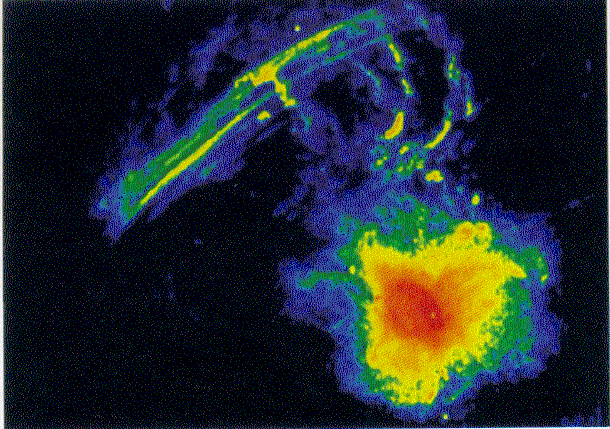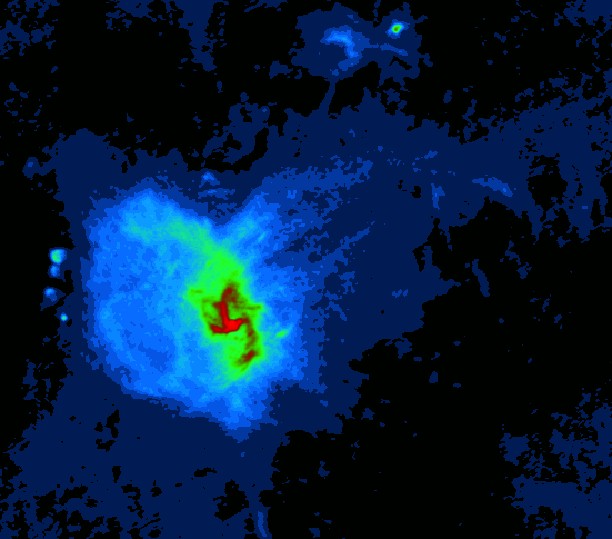Inventory of the Galactic Center
How do we study the center of the Galaxy?
- 28 magnitudes of optical extinction -- can't do it in visible light
- infrared emission
(2.2 microns - K band)
- much less obscured
- old red giant stars (T ~ 4000 K)
are brightest in the infrared.
- radio emission
- unobscured
- not emission from stars
- synchrotron
emission: charged particles spiraling around magnetic fields
- free-free emission: charged particles interacting with one another
At the distance of the Galactic Center, 1" is about
0.05 parsecs.
What do we see?
In the infrared: A rising density of stars towards the
center:
~ r-2 from 1
parsec to 0.1 parsec. Stars are very close
together, so close interactions are common.
In the radio: Lots of non-thermal
synchrotron radio emission showing ionized gas and magnetic
fields:

(Picture spans ~ 60 pc across)
The brightest radio source
is called Sagittarius A (Sgr A). Sgr A is not a single object, but a
complex region at the center of the Galaxy:

VLA radio image (Farhad-Zadeh
& Morris)
- Sgr A East (left side, light blue) is hot explosion
remnant, perhaps from a supernova or something else?
- Sgr A West (center, red) is a region of ionized gas
which shows a mini-spiral pattern
- Sgr A* is a very bright, compact radio source
located in the center of Sgr A West.


